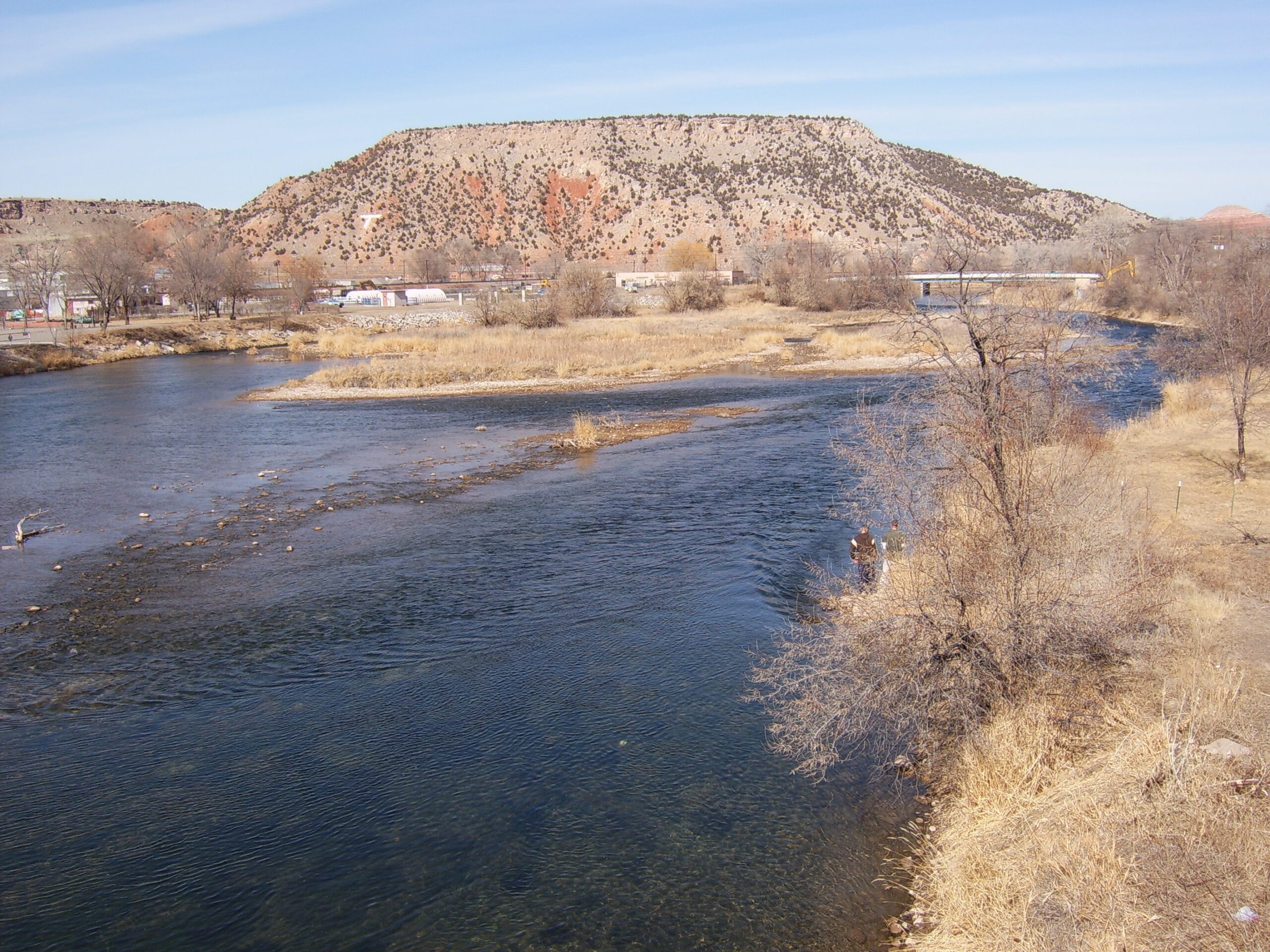
1.) A section of the Bighorn River had to be de-watered so that an intake could be installed.
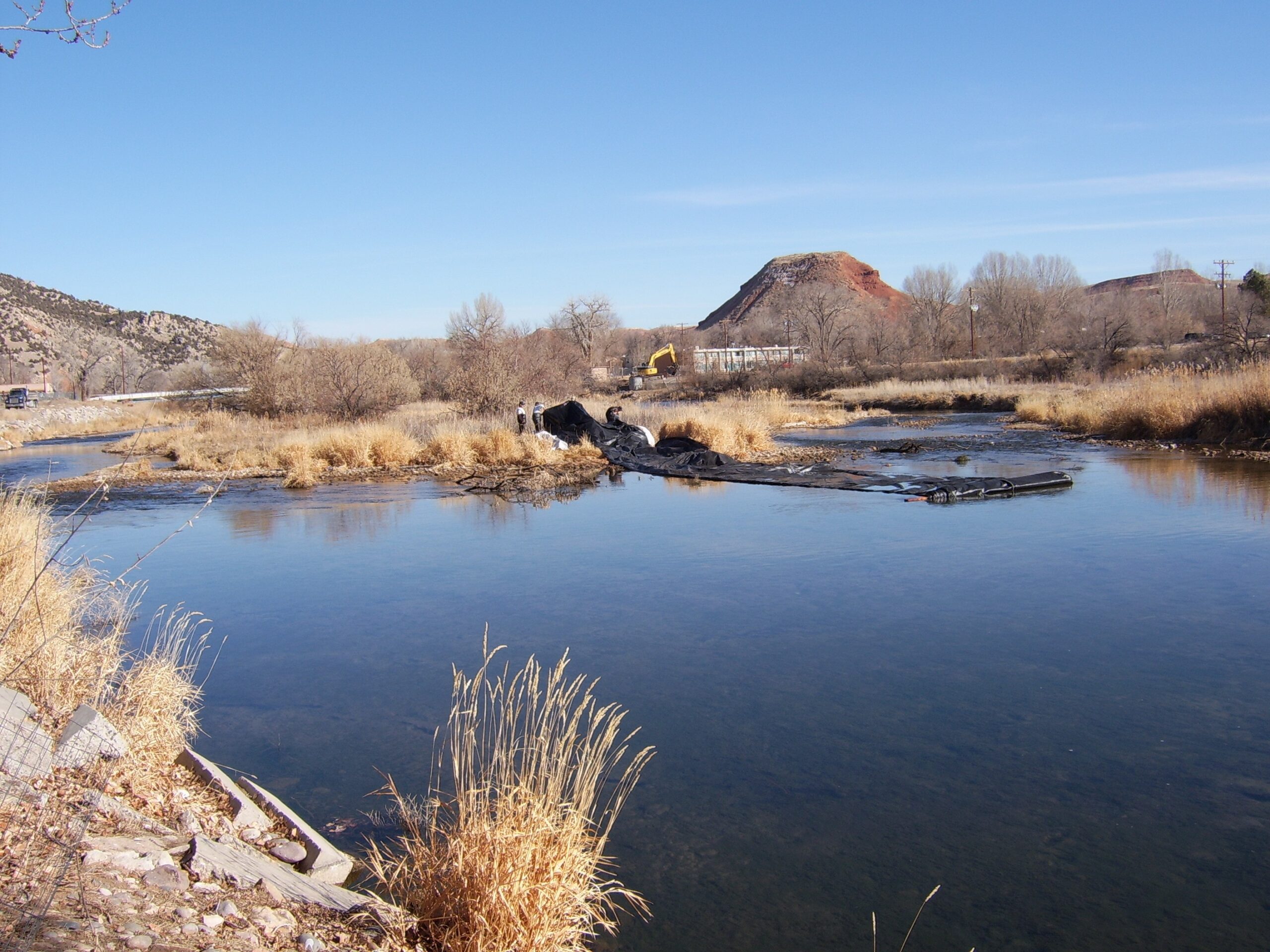
2.) The first AquaDam® has been launched from its starting bank. Is that Monument Hill in the background?
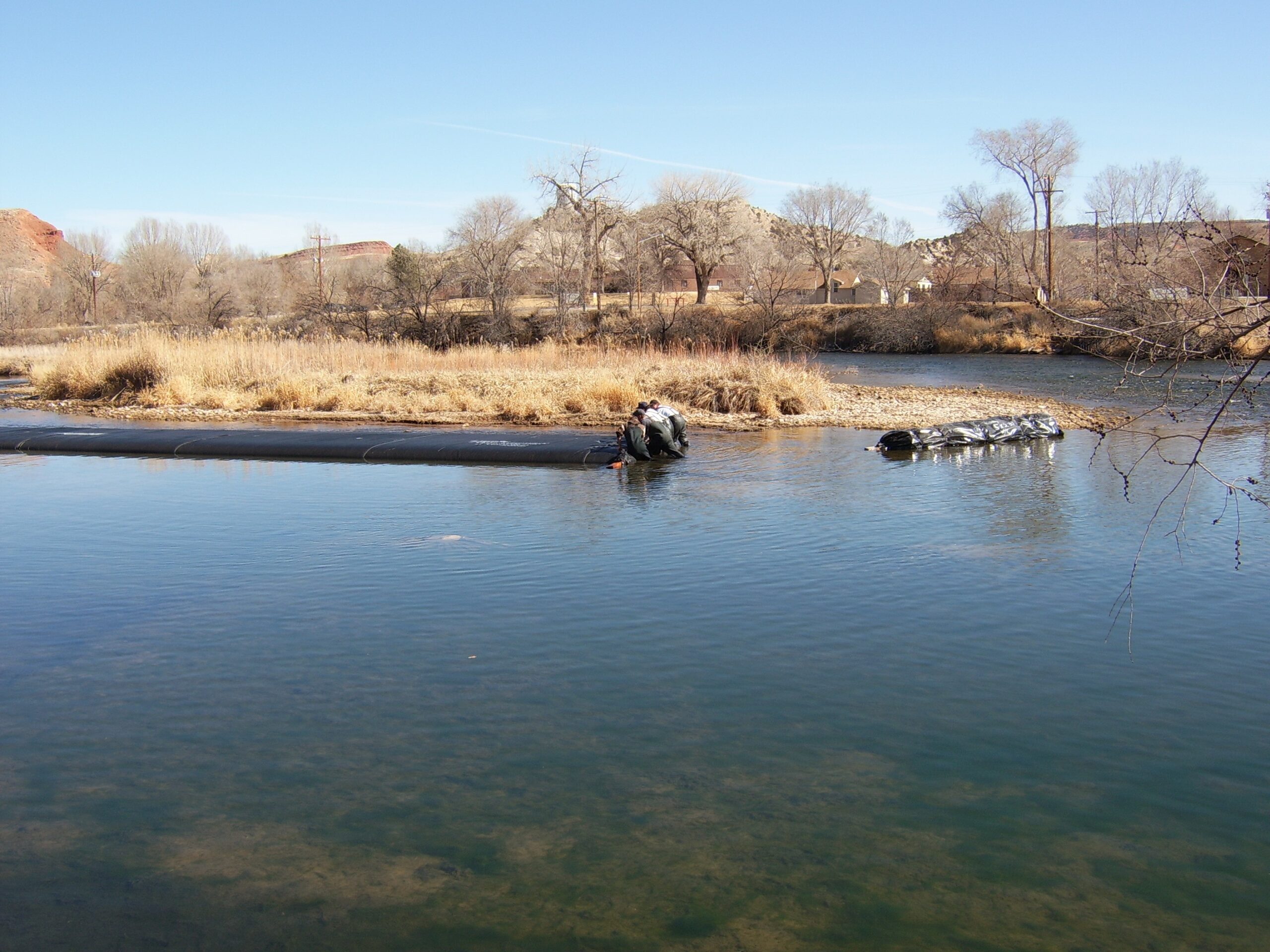
3.) Workers are unrolling the first 5ft tall double closed end (DCE) AquaDam® with a connection collar. The fill-tubes for a DCE AquaDam® are on top of the body of the unit allowing it to be free standing and not require a starting bank. The next AquaDam® is sitting just upstream there at the island. AquaDams are delivered in a rolled-up form, similar to a carpet roll on a wooden beam. They are wrapped in a protective covering and include lifting ropes or straps for easy transportation.
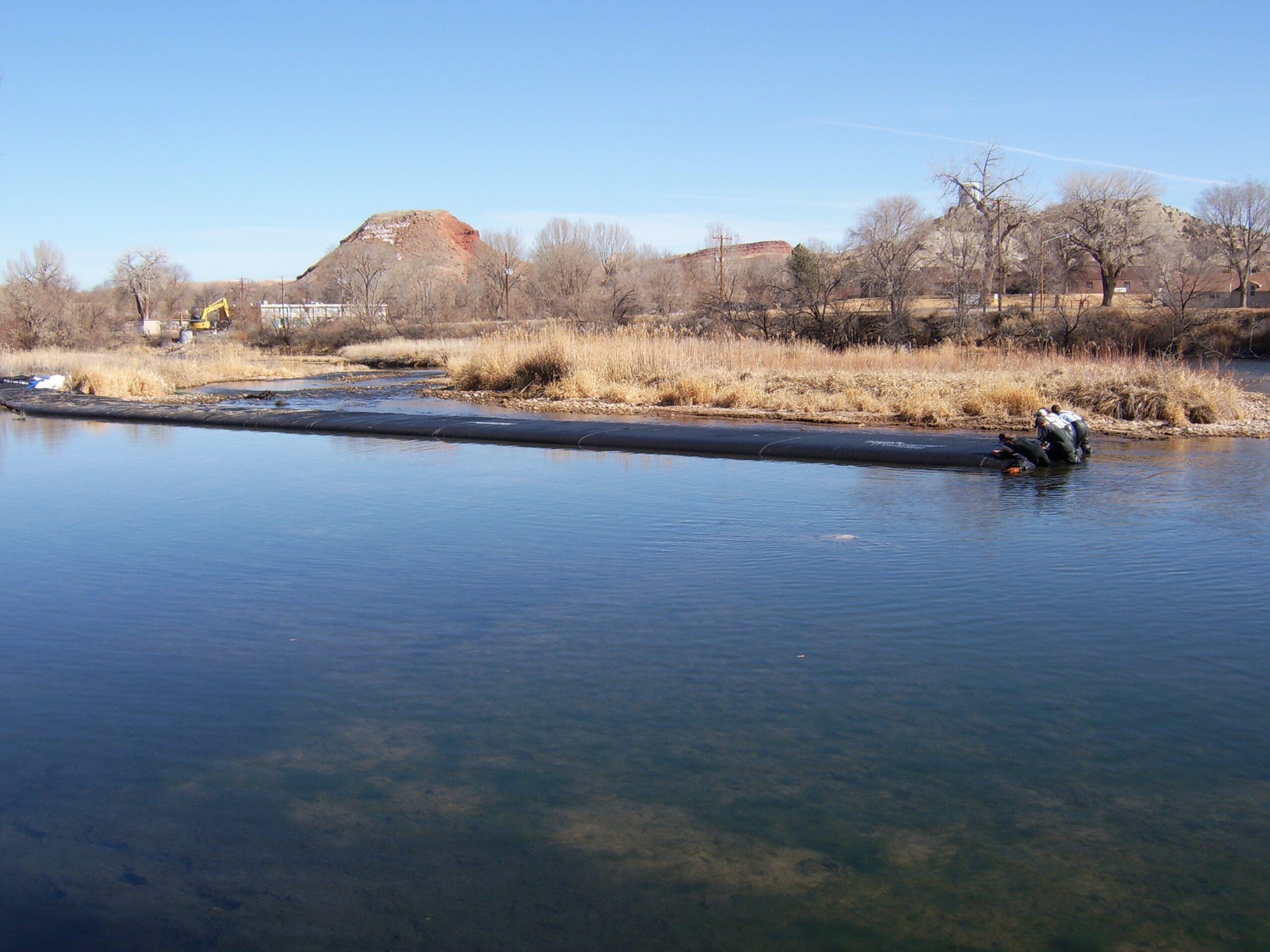
4.) The fist DCE AquaDam® continues to fill.
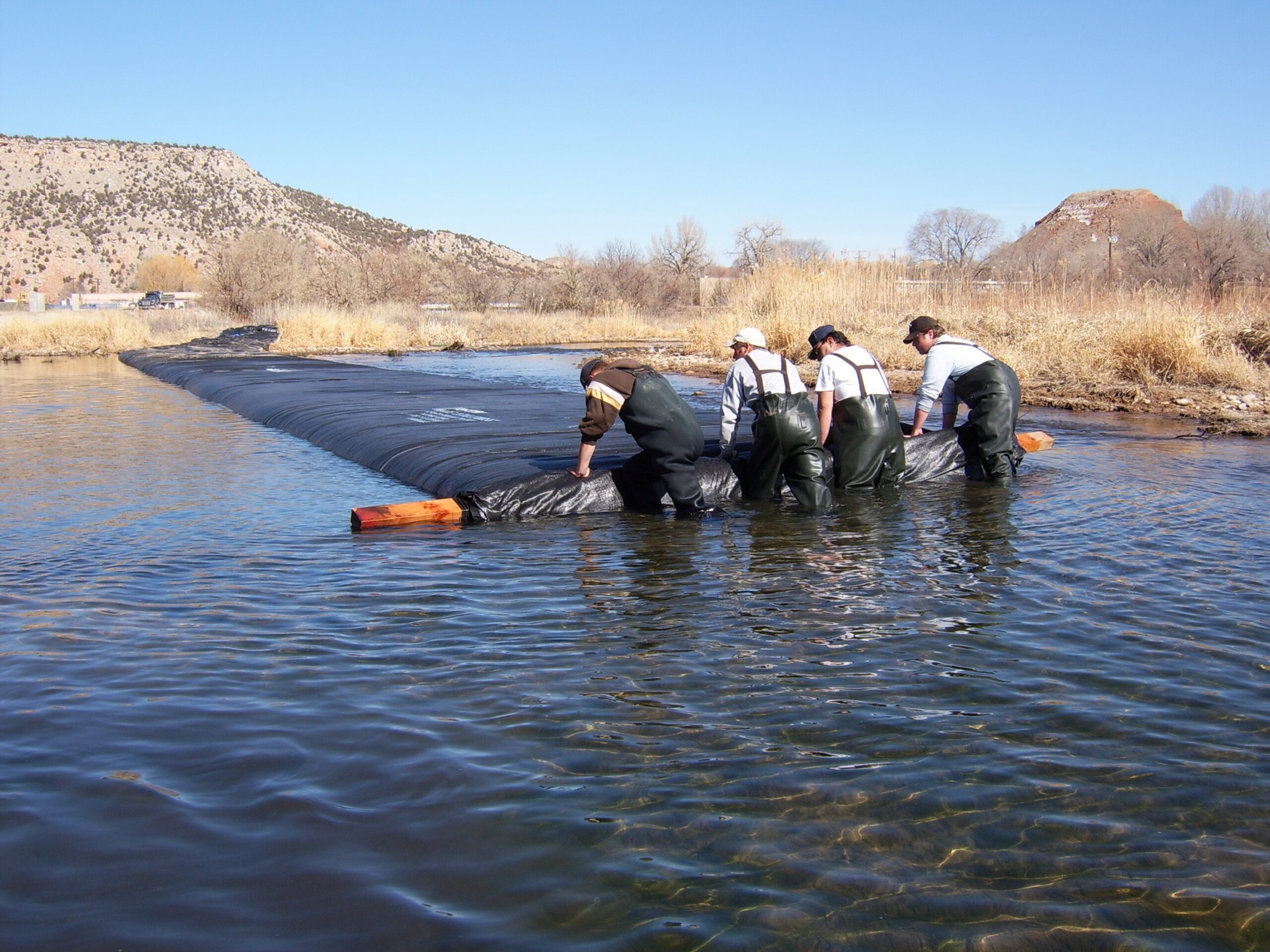
5.) As the AquaDam® is filled with water workers are needed to hold the roll, so the AquaDam® will build head inside and not unroll too fast. In flowing water it is best to have a good size head built up before allowing the AquaDam® to unroll. If it unrolls too fast, the current of the river could move the dam downstream.
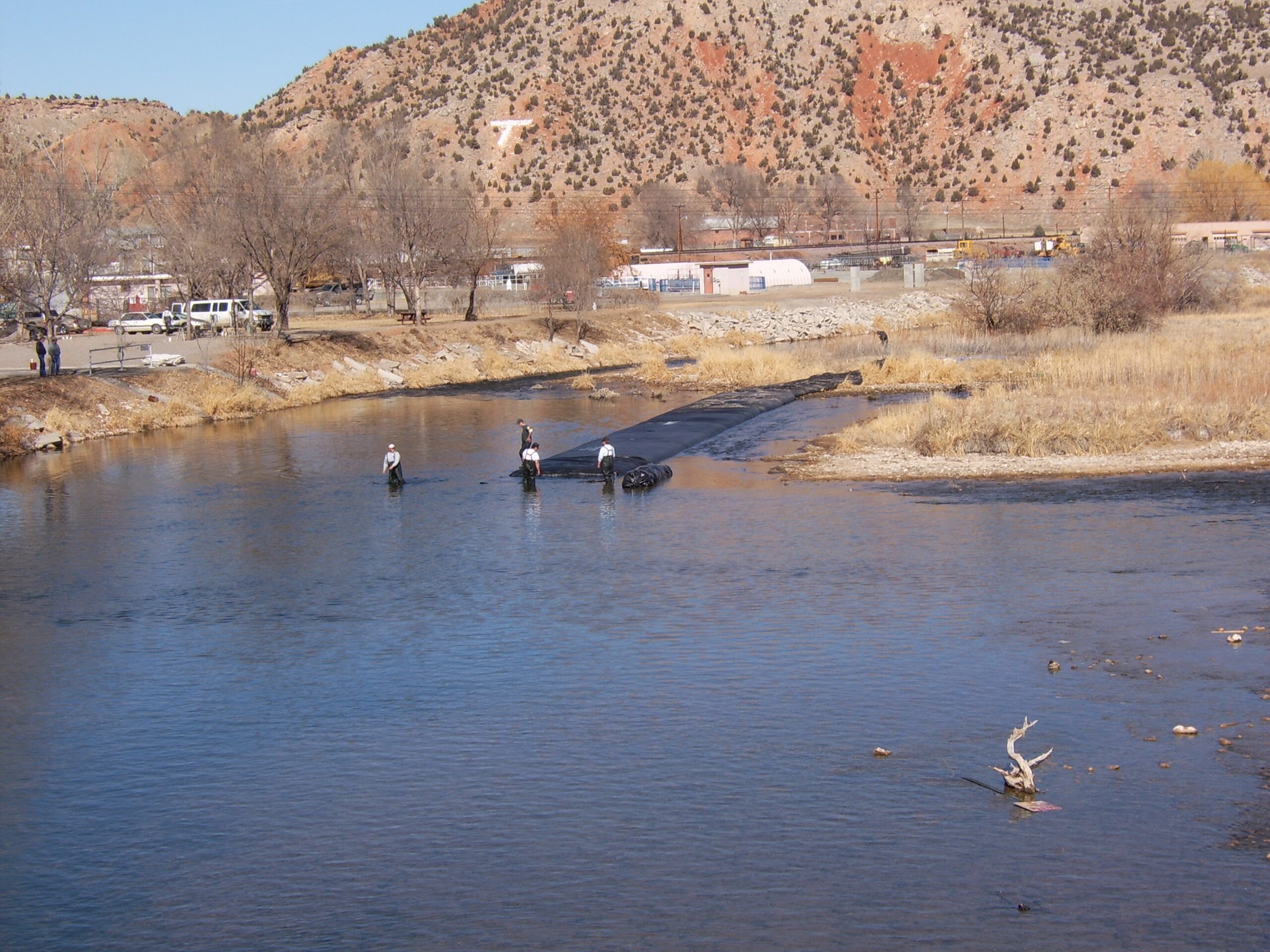
6.) The first DCE AquaDam® has completely unrolled and will now need to finish being filled.
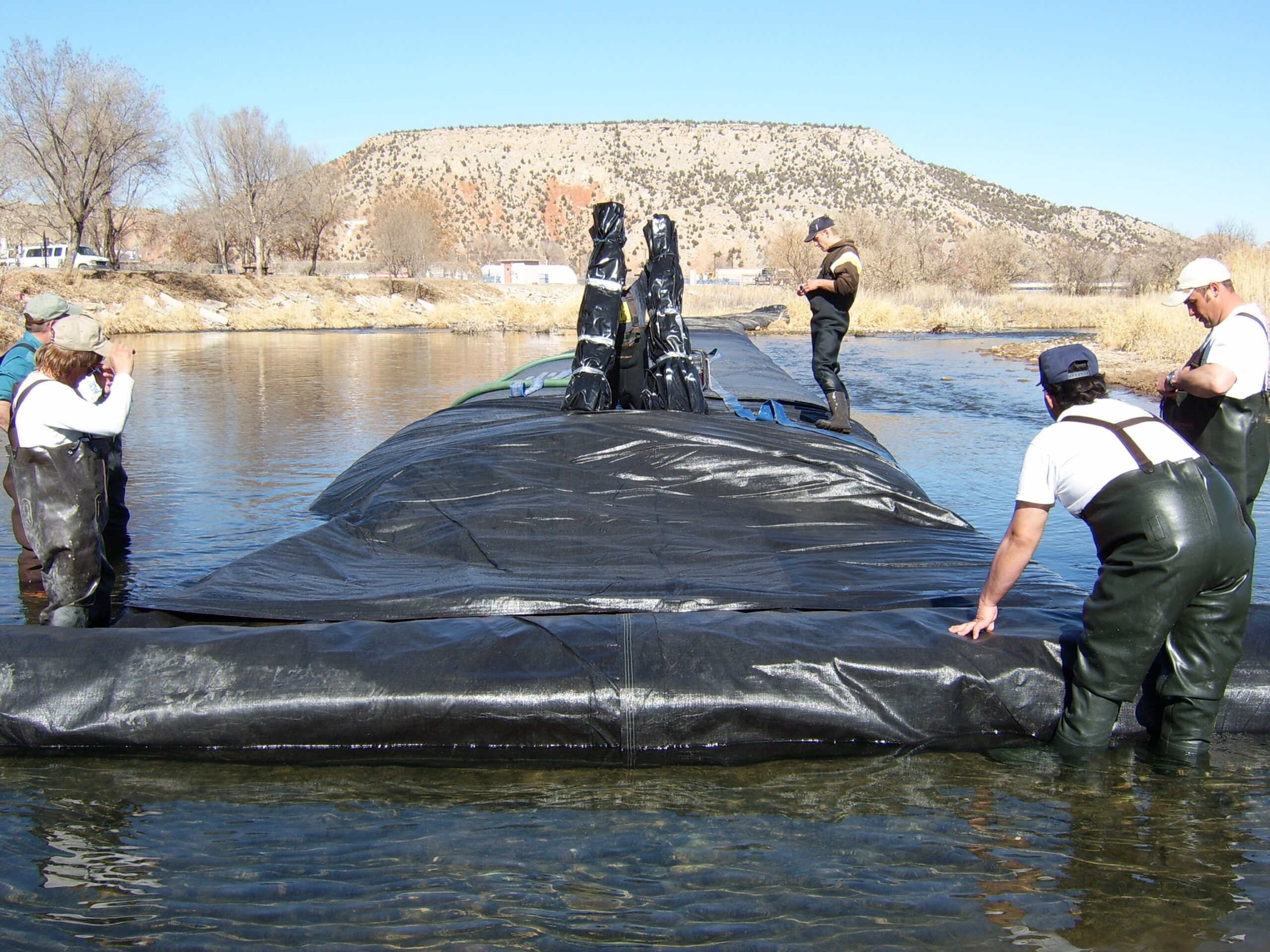
7.) The fill-tubes of the second AquaDam® are the two tubes that are elevated above the first AquaDam. This is where the next section of AquaDam® will start. The second AquaDam® has been inserted into the connection collar of the first dam. The second AquaDam® is a single closed end (SCE) AquaDam.
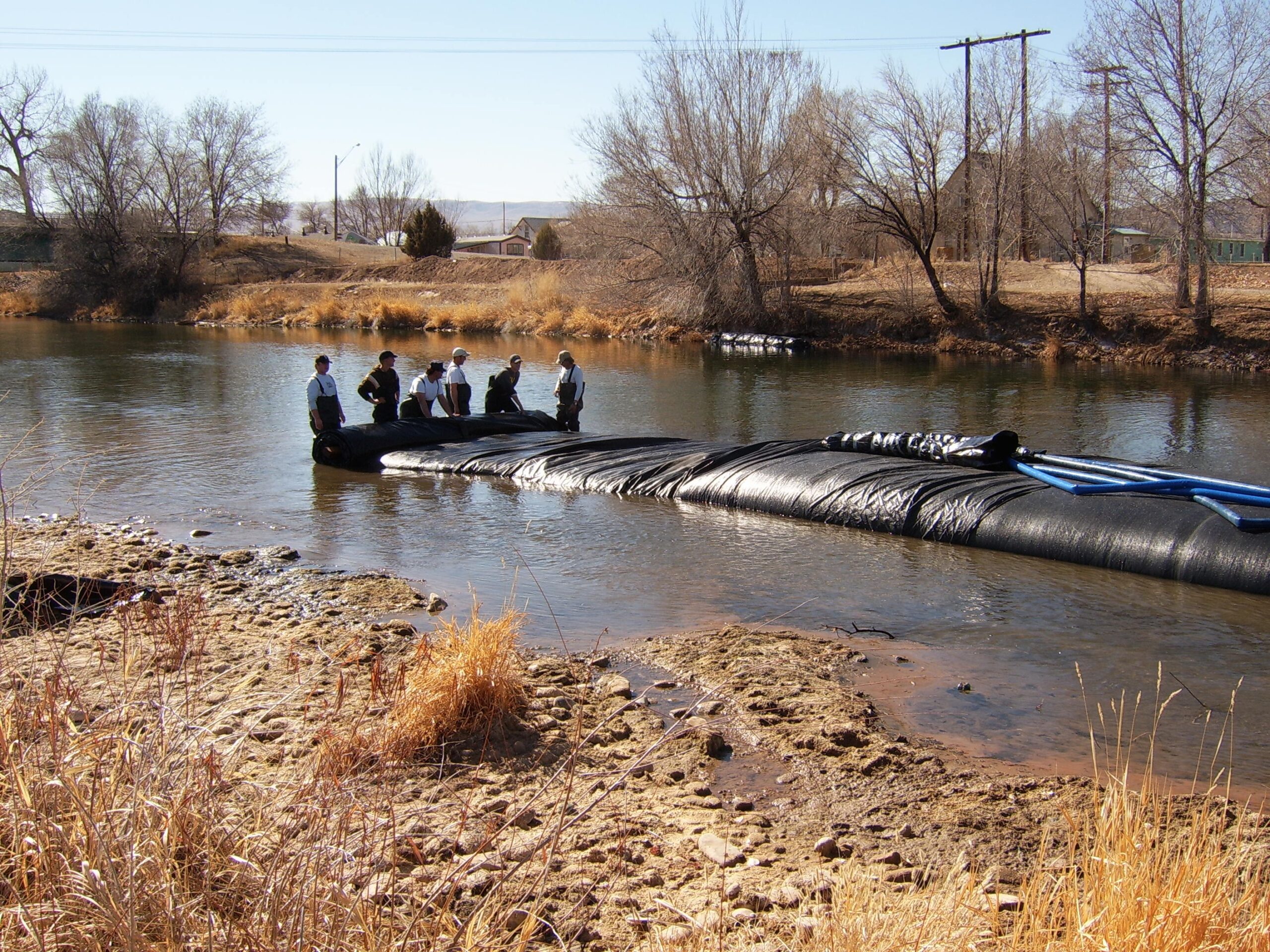
8.) The second SCE AquaDam® is being unrolled and installed into the connection collar. If it unrolls too fast in a strong current, the current can push the structure off course. Workers should be in front of the roll to hold it in place so water can build up behind it, inside the AquaDam.
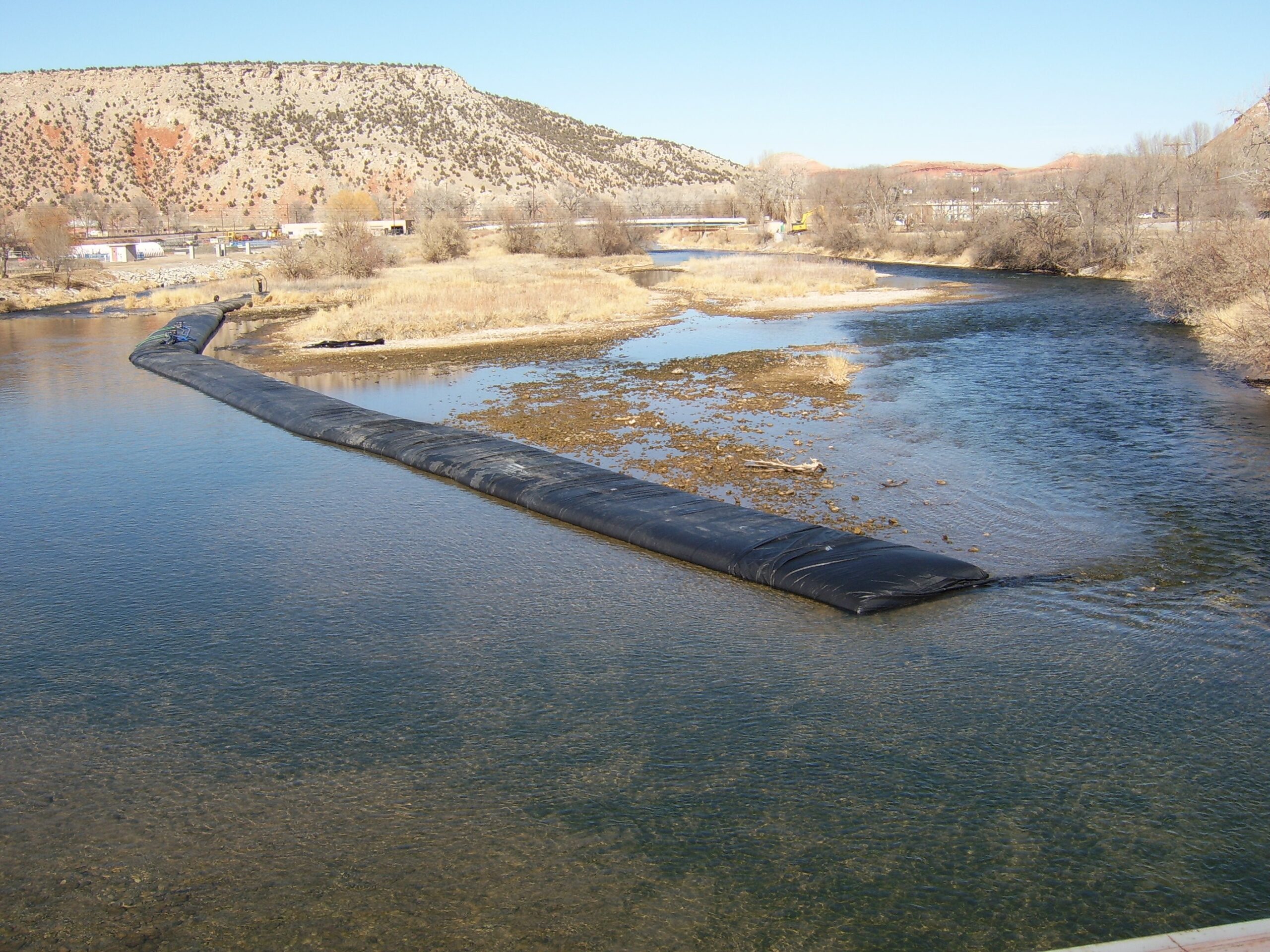
9.) The second SCE has completely unrolled and will need to finish being filled with water.
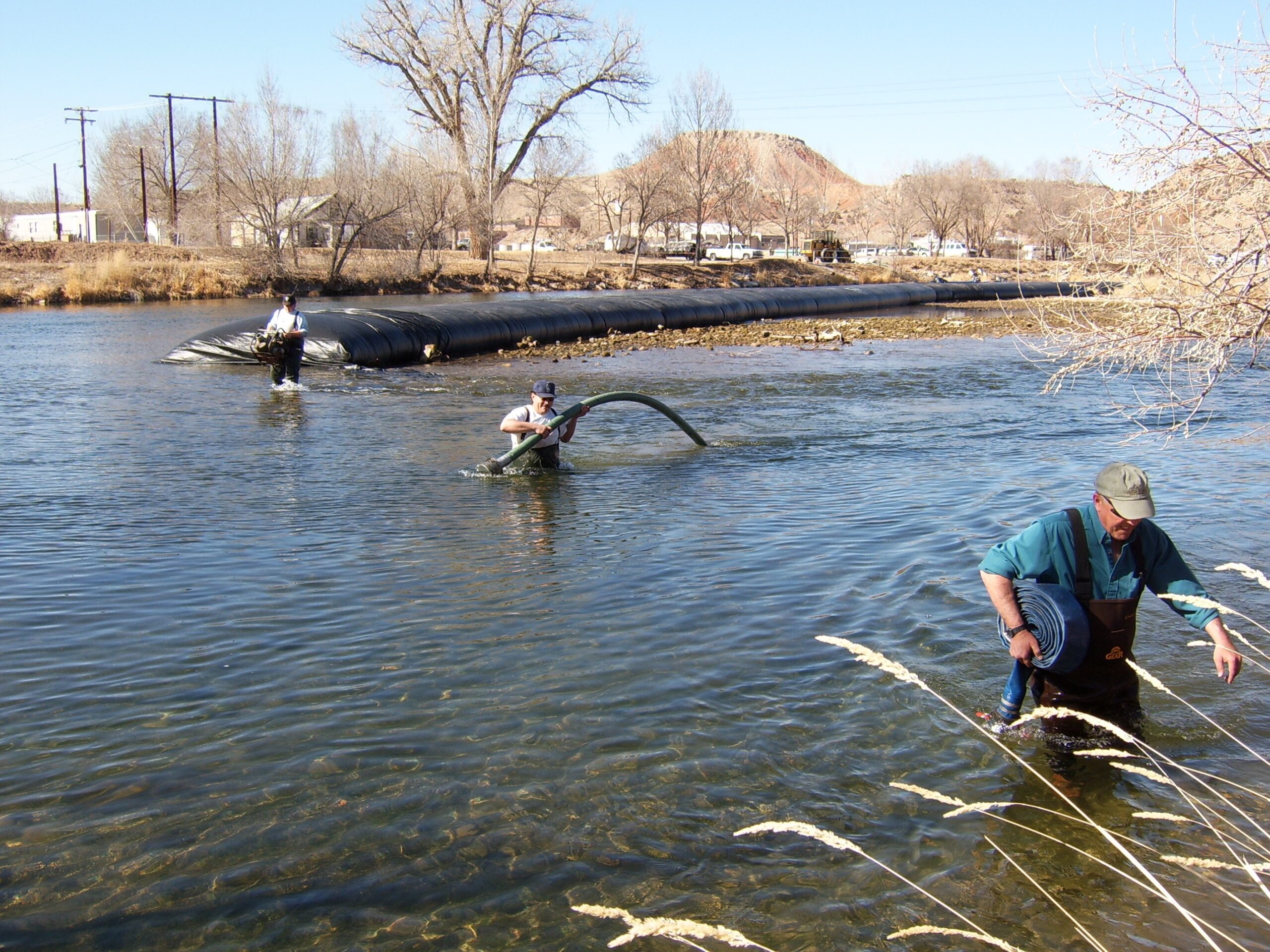
10.) Now that the second SCE AquaDam® is installed and full, worker carry the pumps and hoses to the next location to install an AquaDam.
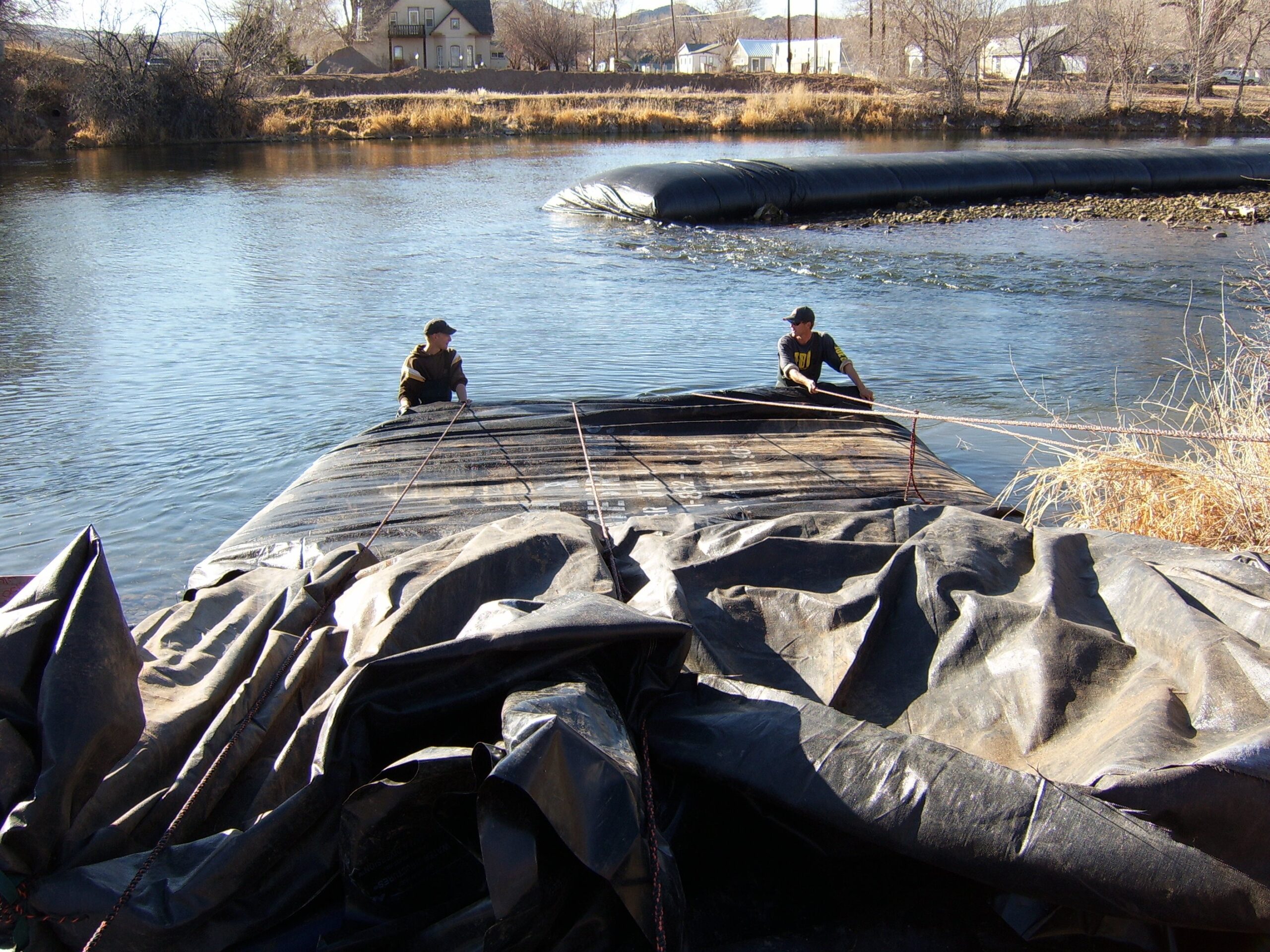
11.) Ropes can also be used to keep the AquaDam® from unrolling to fast. Ropes have been anchored at shore, run under the AquaDam, over top of the roll, and back to workers who control the roll while the dam is being filled with water. The ropes are used to hold back the roll, while the unrolled length fills and gains head above the surrounding water.
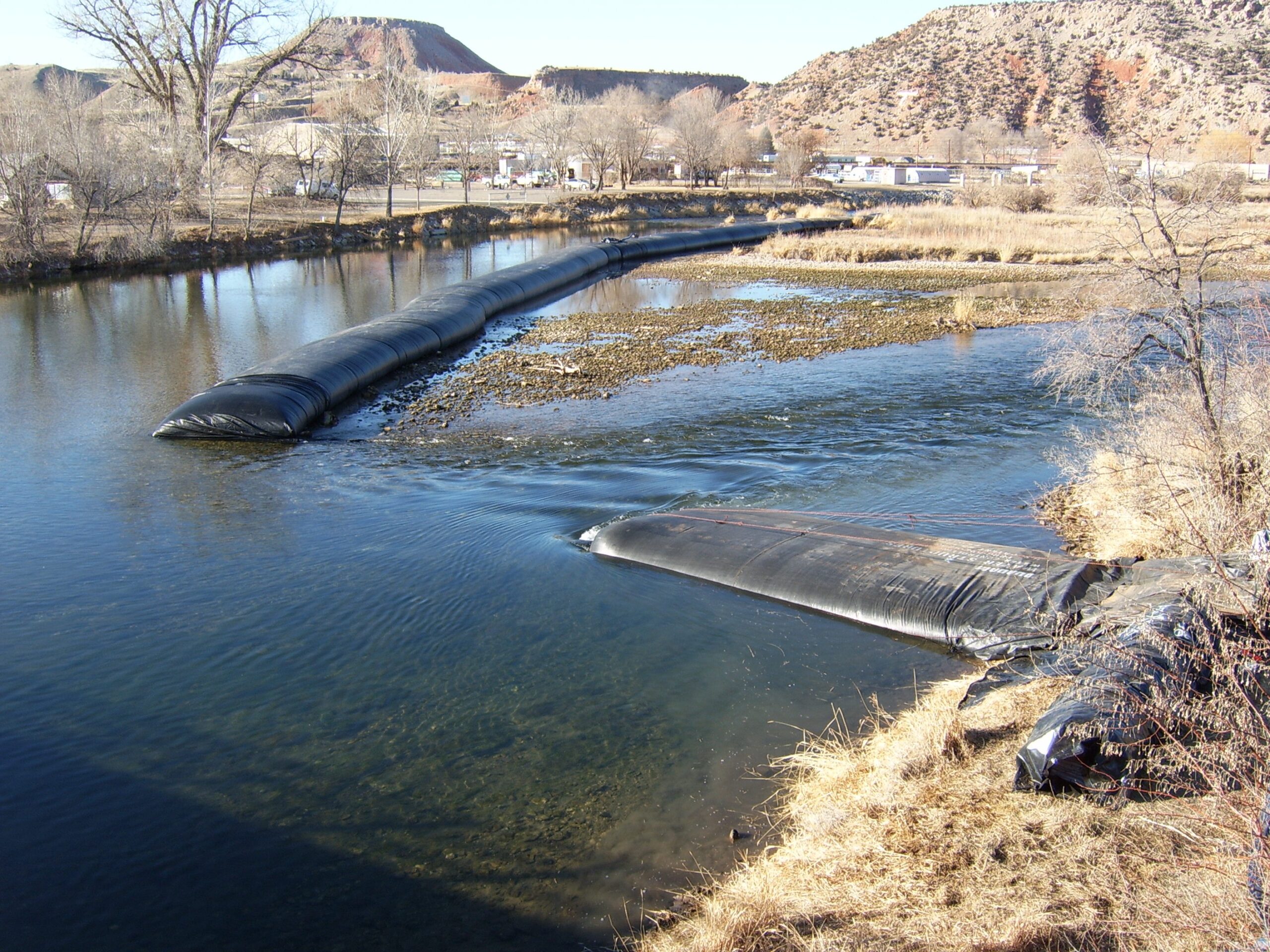
12.) Looking downstream we can see that the AquaDam® is closing off this side of the river. This AquaDam® was used to help impede the flow and add support for the main AquaDam, which will be installed just upstream of this one.
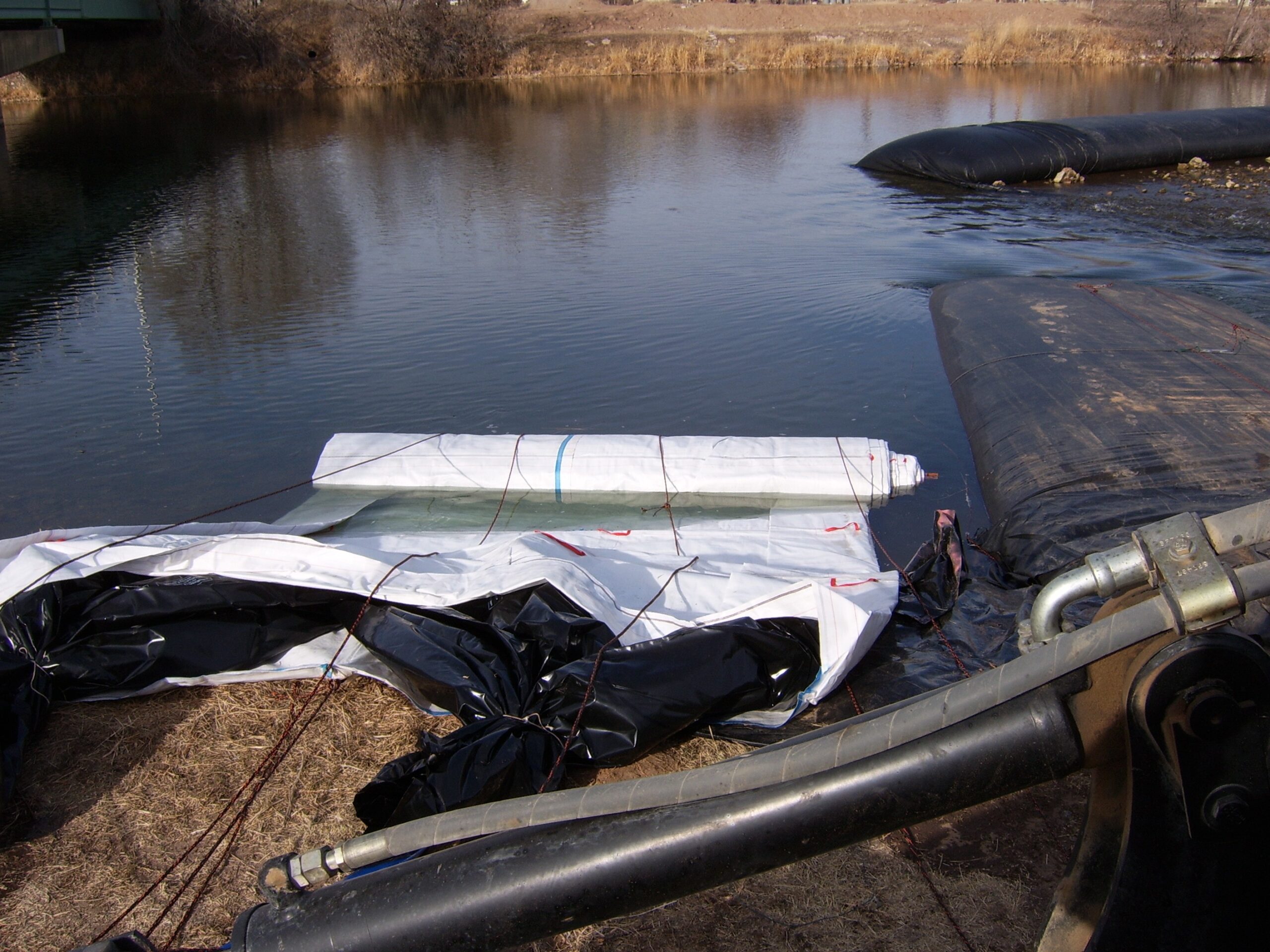
13.) With the majority of the flow diverted to the other side of the river, installing this AquaDam® will not be that difficult.
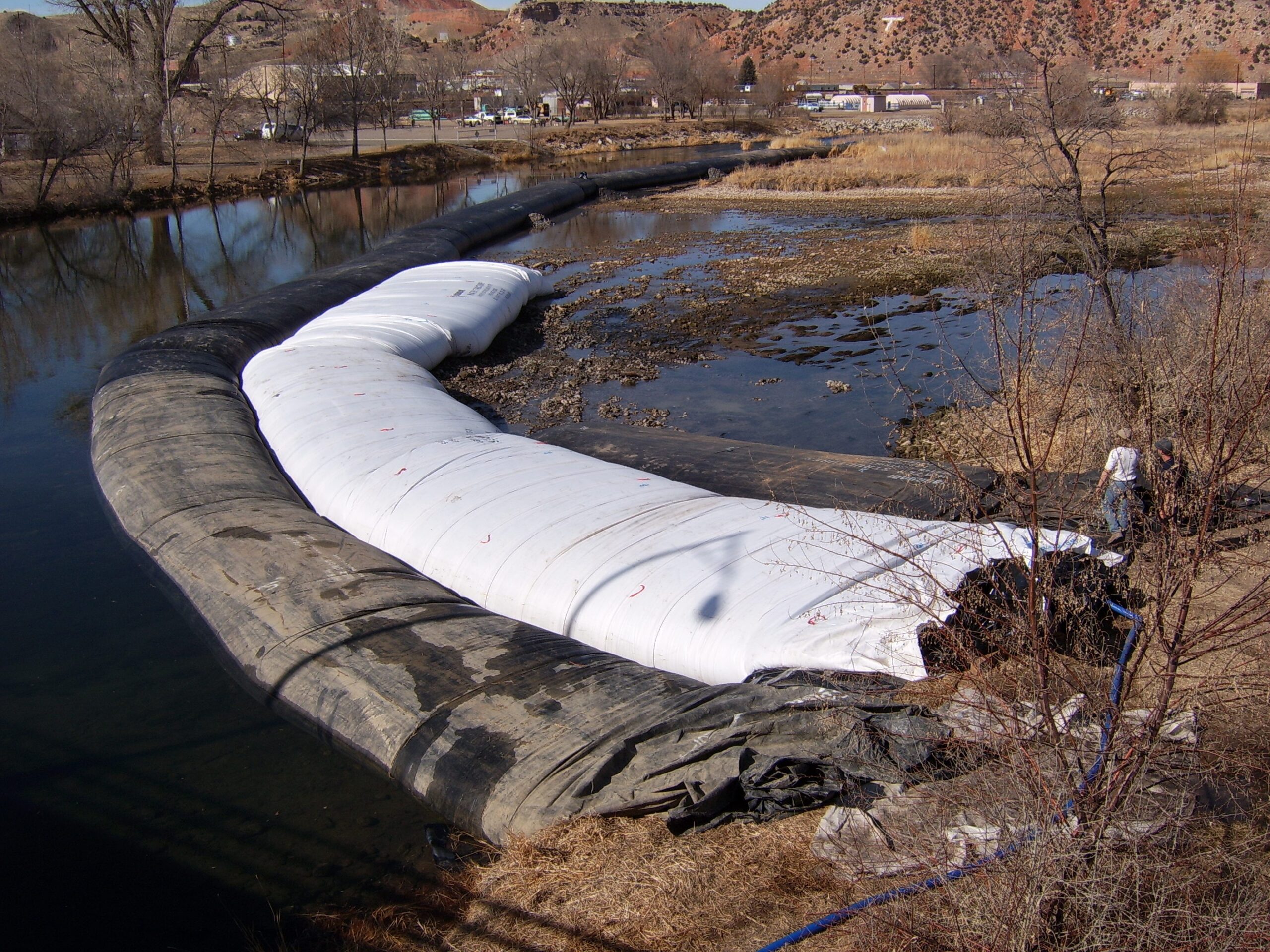
14.) With the upstream AquaDam® installed, the river has been diverted. Can you tell the water depth difference from left to right of the AquaDams?
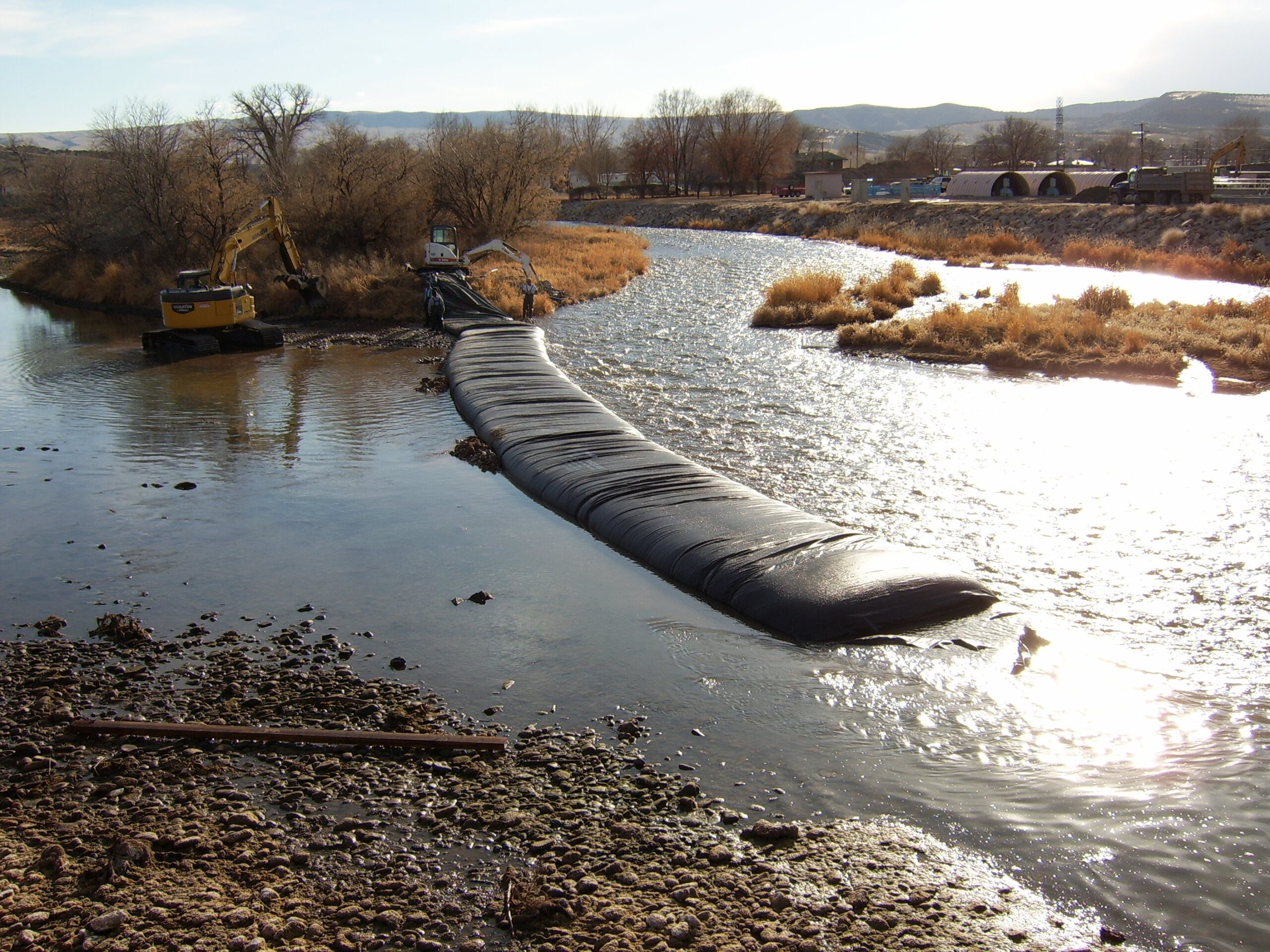
15.) Workers install the downstream AquaDam® to isolate the work area.
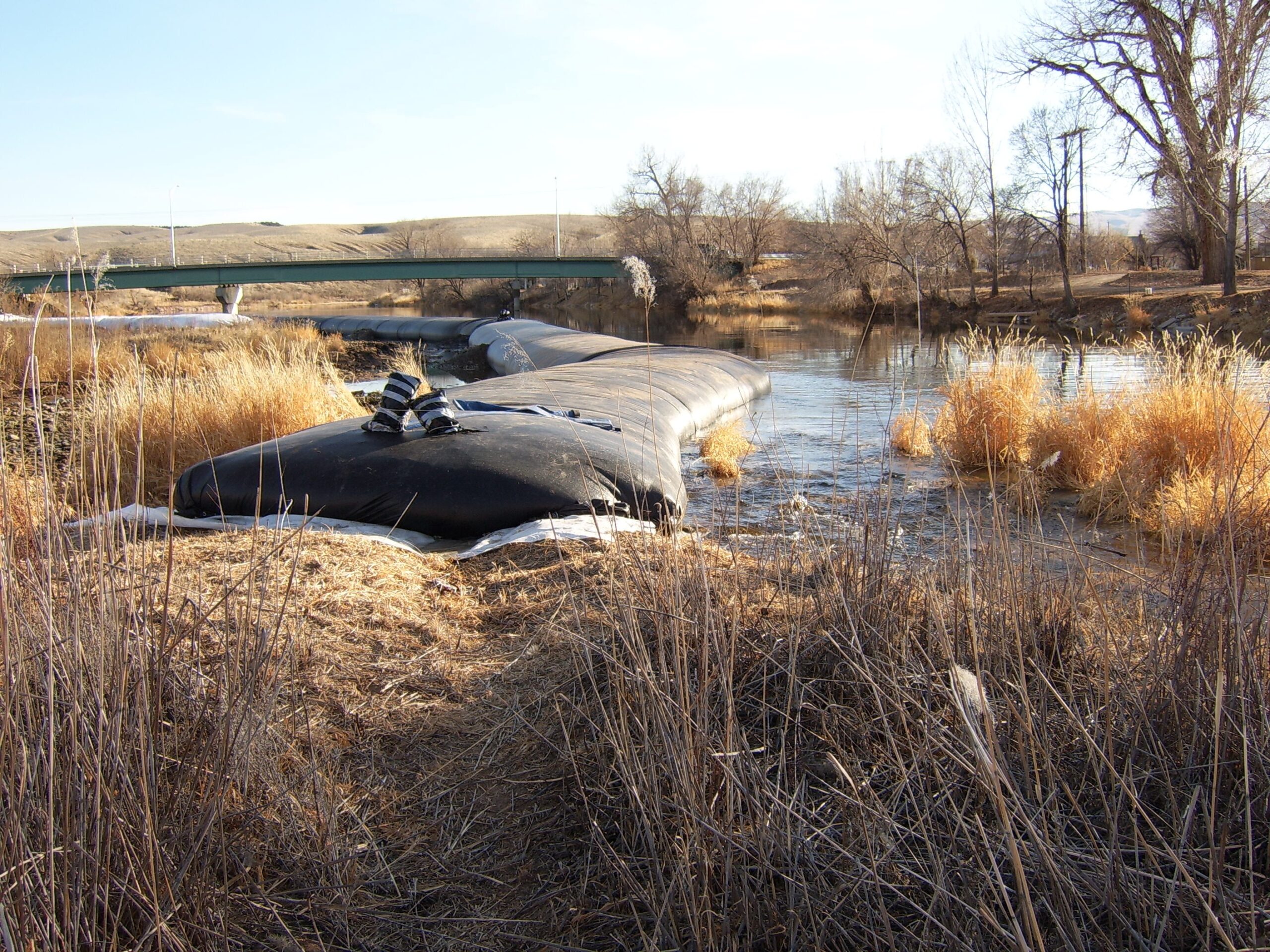
16.) The fill-tubes of a DCE AquaDam® are elevated above the body of the dam and are used to fill and empty the structure.
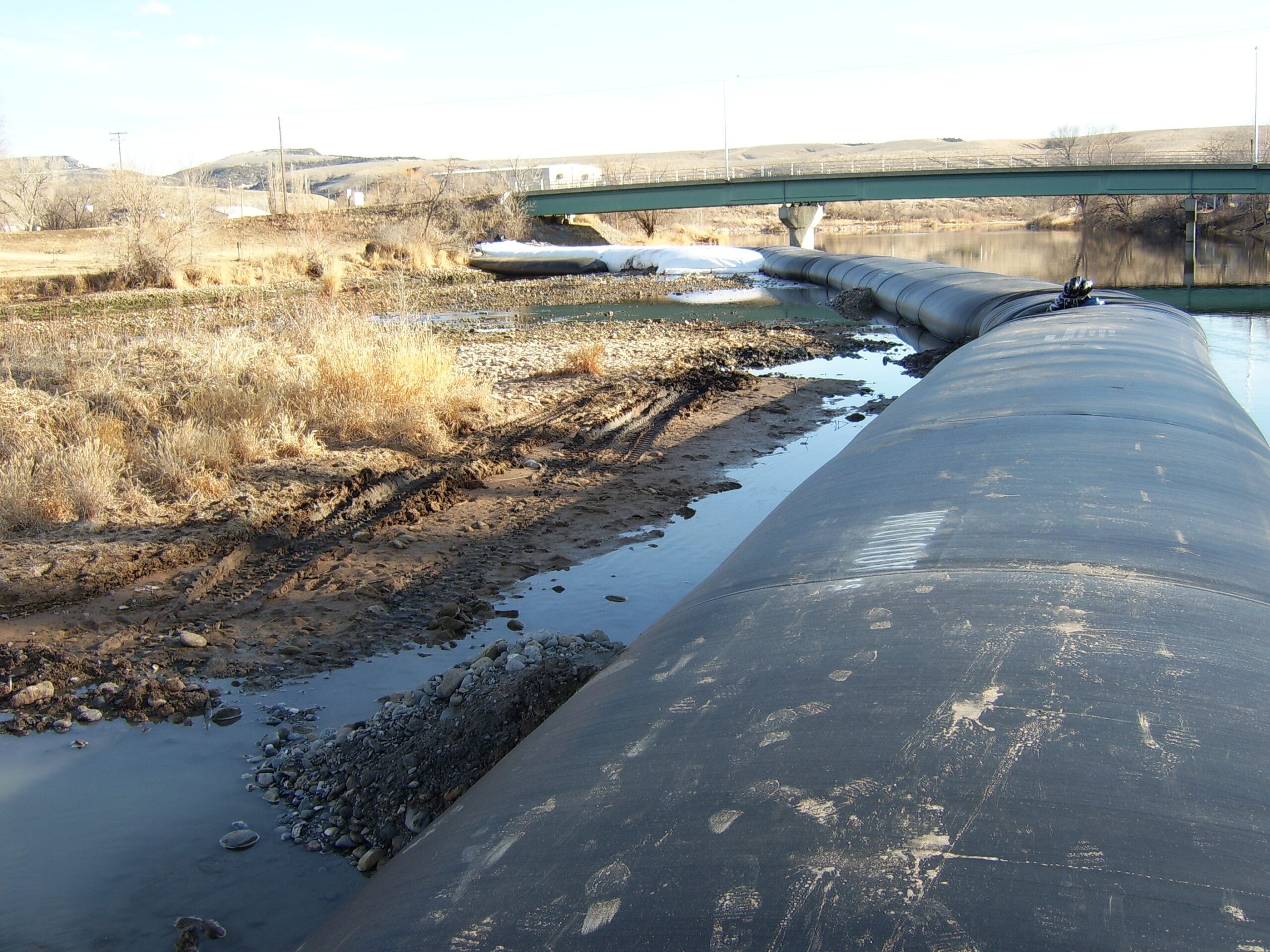
17.) Workers placed piles of non-abrasive fill material behind the AquaDam® to provide additional support.
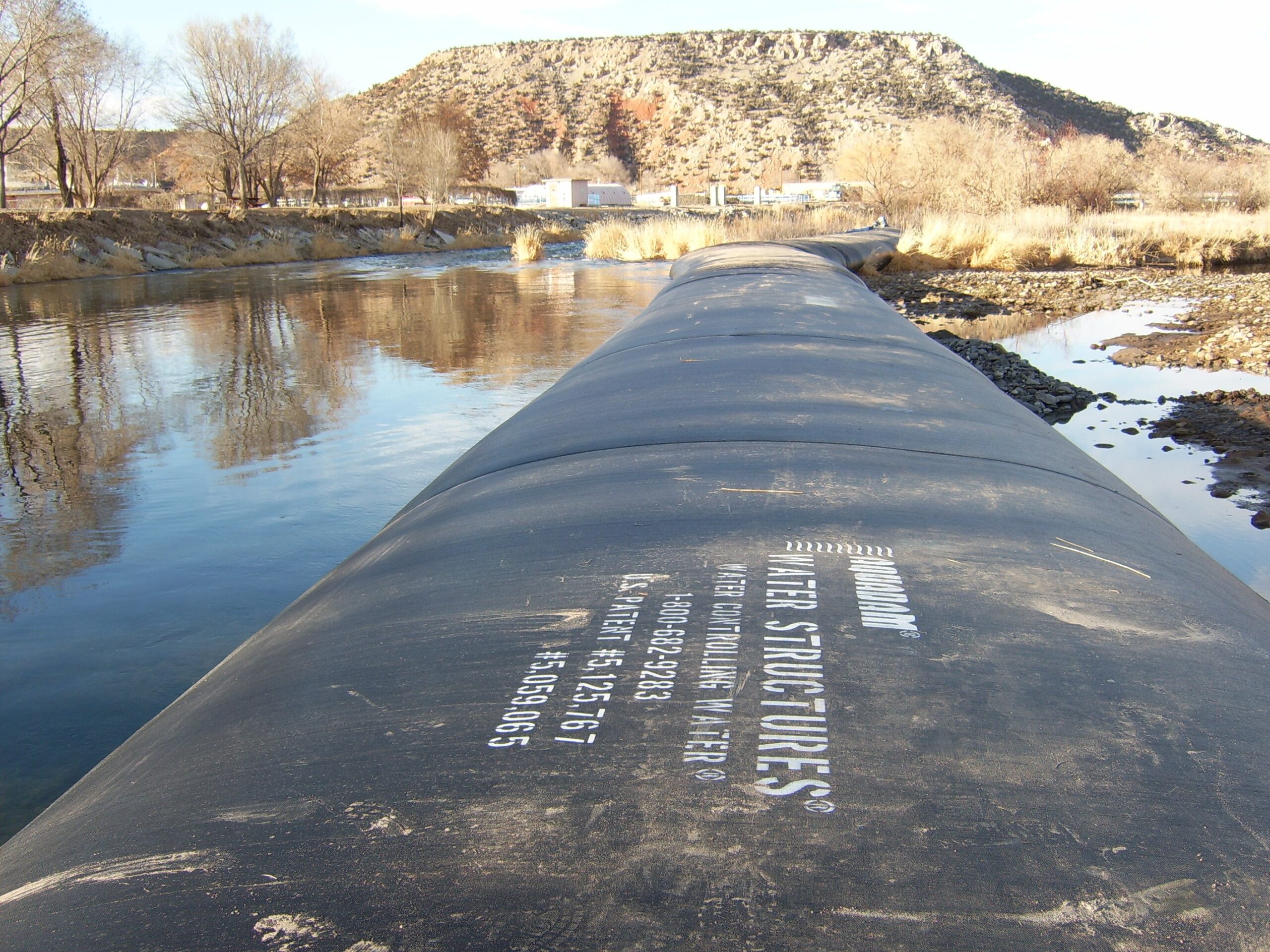
18.) Looking downstream with the AquaDam® cofferdam system fully installed and working.
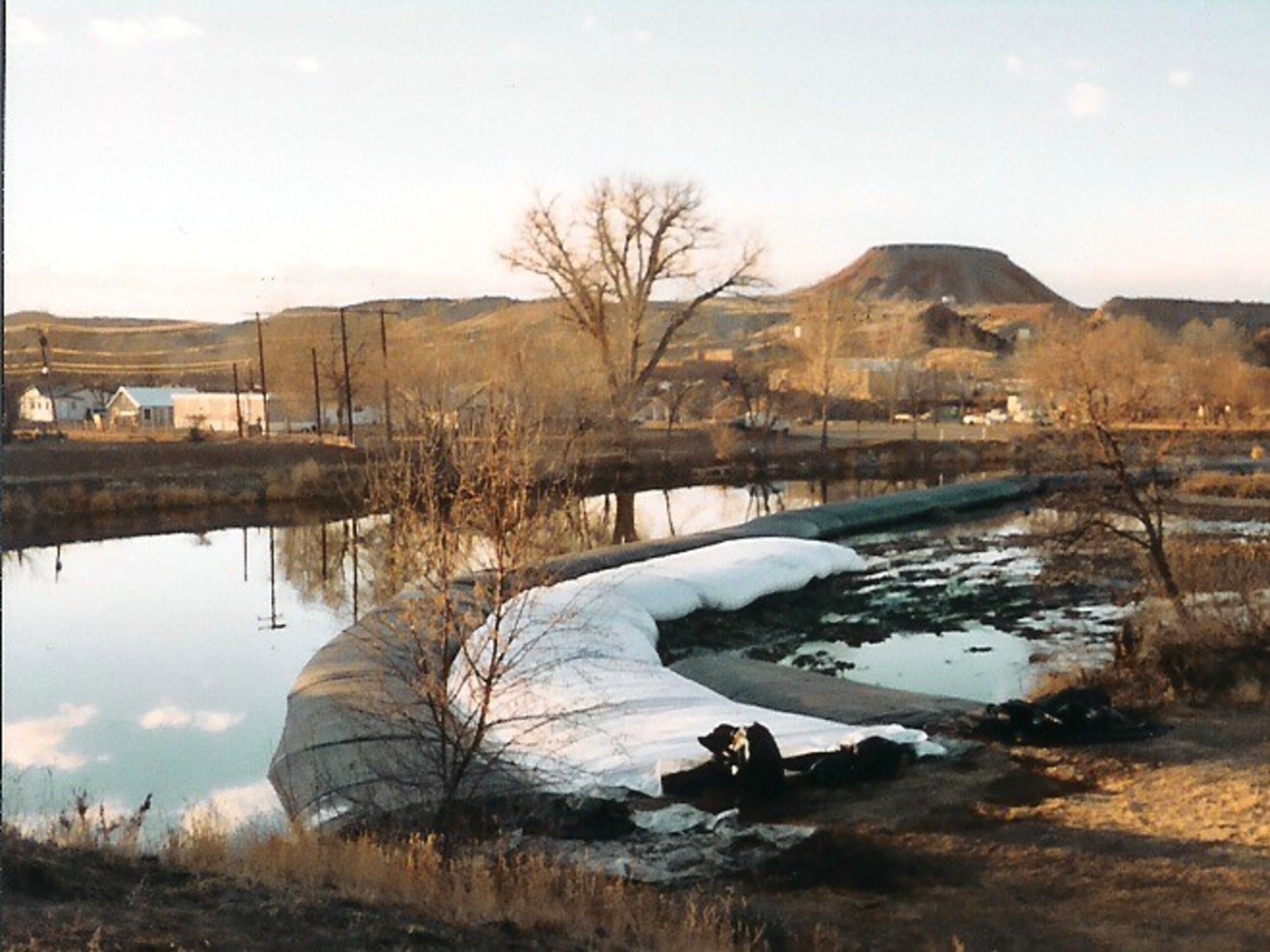
19.) A few days later we can see the de-watered work area.
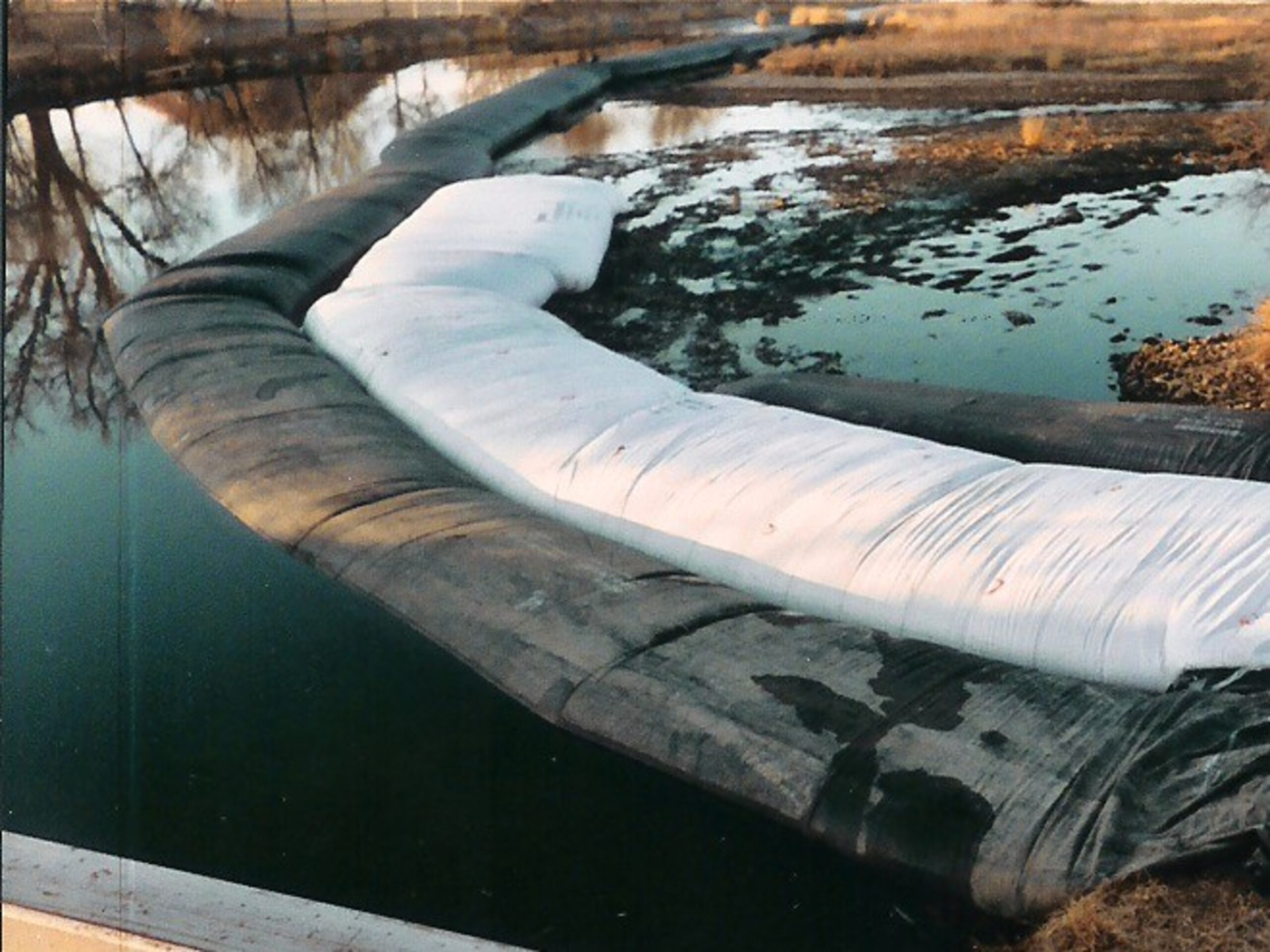
20.) This a deep channel right here, notice how high the water is on the AquaDam® closest to the camera.
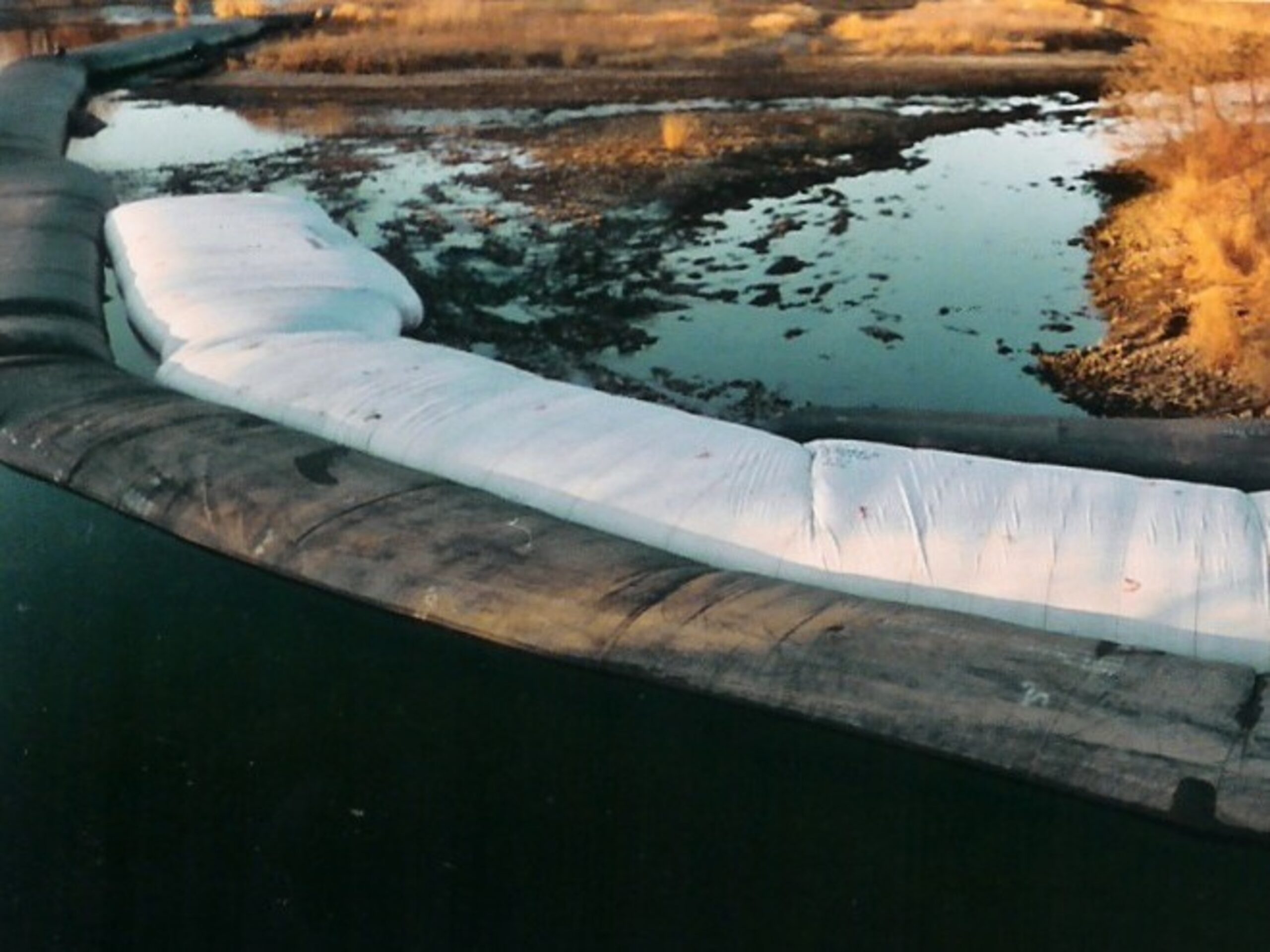
21.) There appears to be very little seepage for how rocky the riverbed is.
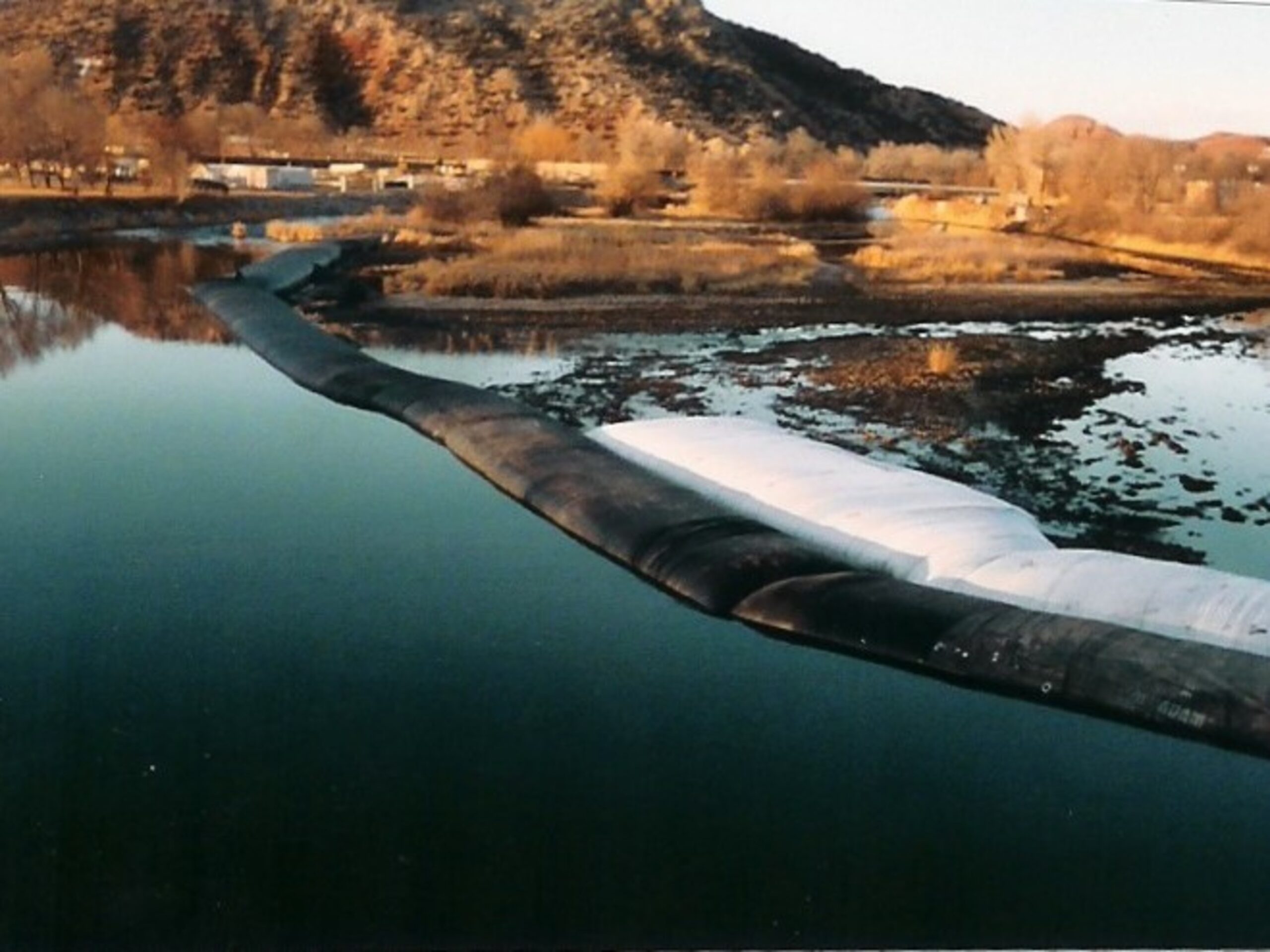
22.) The Bighorn River has been successfully diverted.
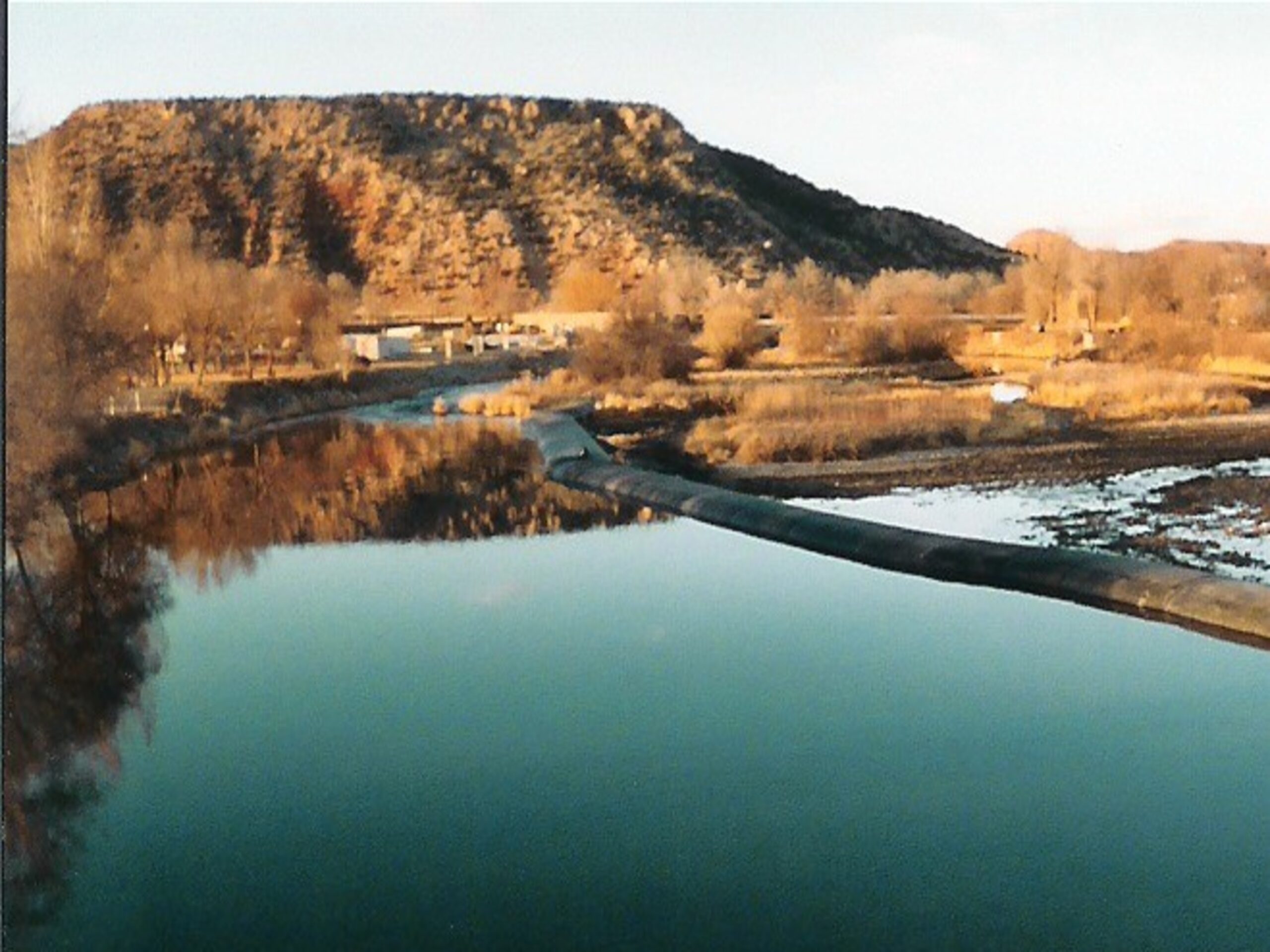
23.) Looking downstream with the AquaDam® cofferdam system up and working great.
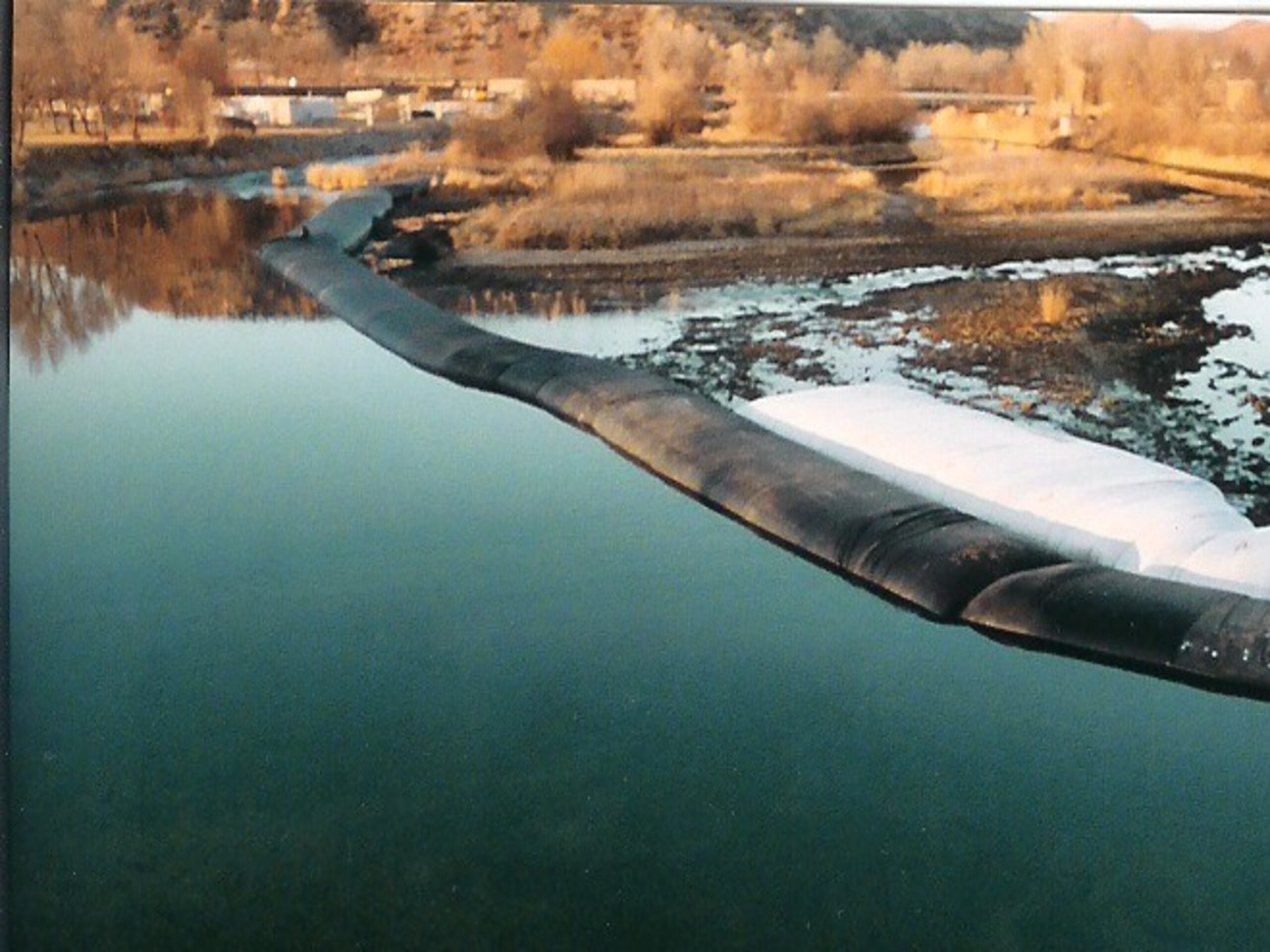
24.) Can you tell the water depth difference from one side of the AquaDams to the other?
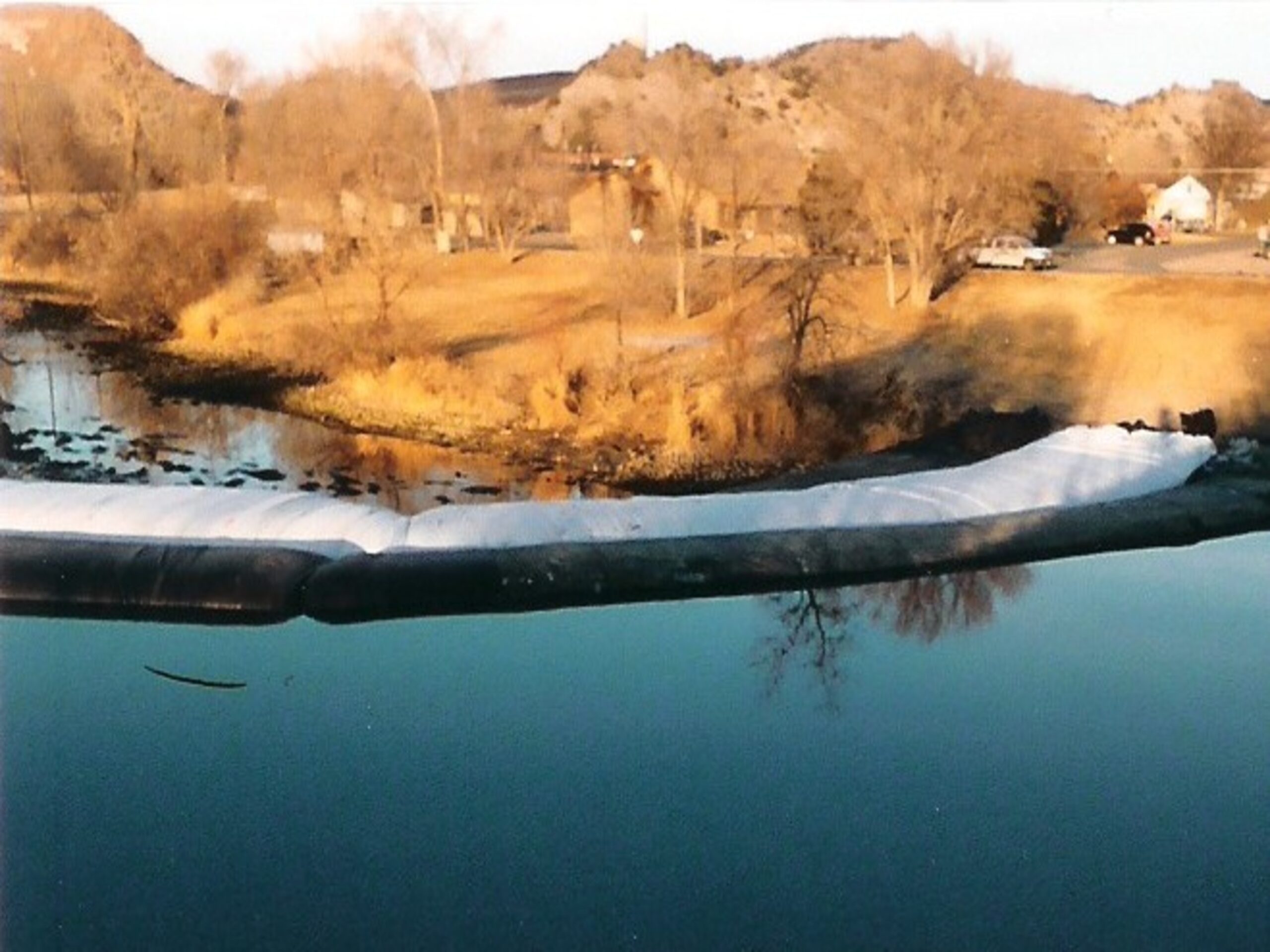
25.) The upstream AquaDams are doing a wonderful job of diverting the river away from the work area.
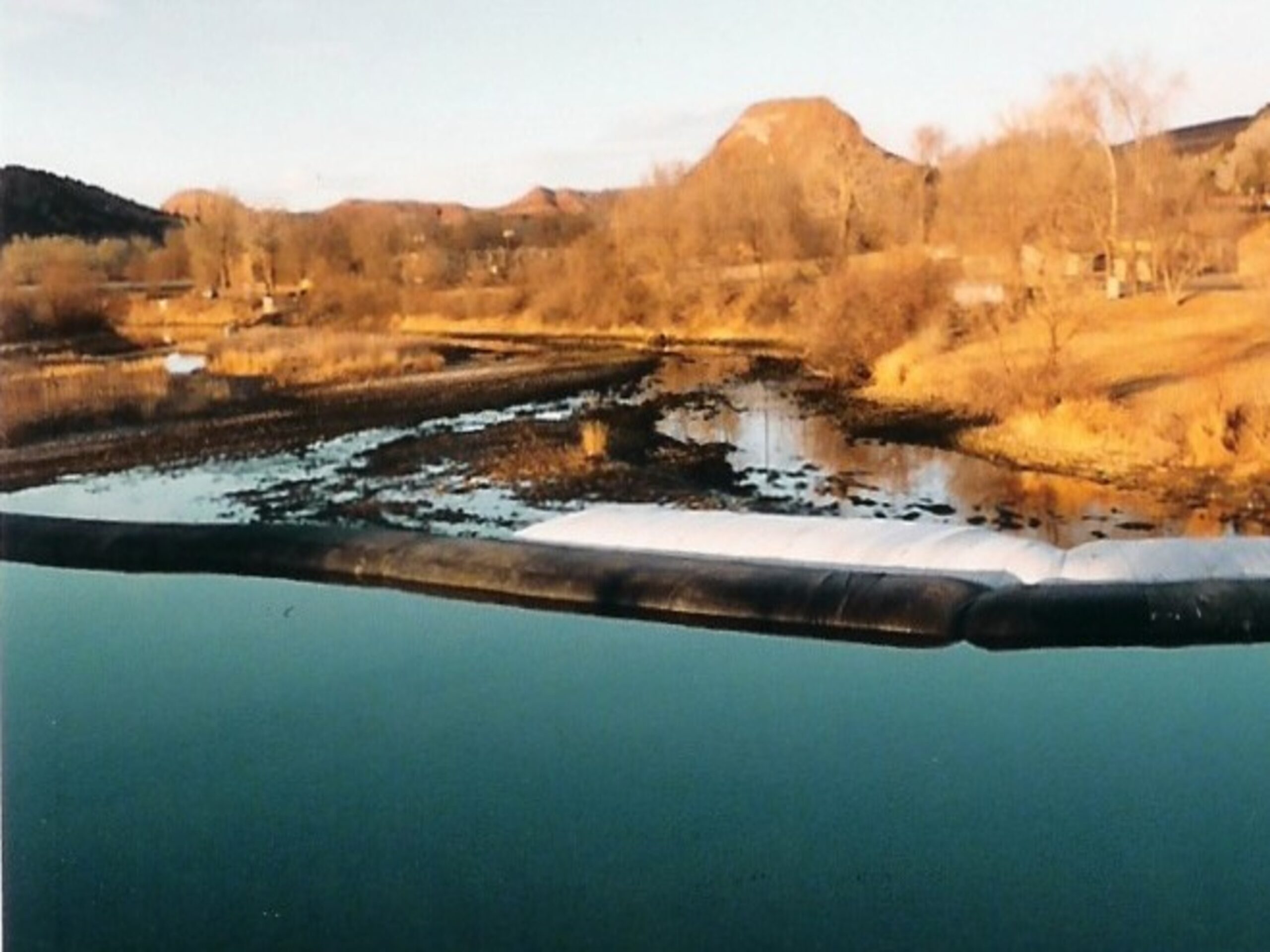
26.) With the work area relatively dry, the project can continue to move forward.
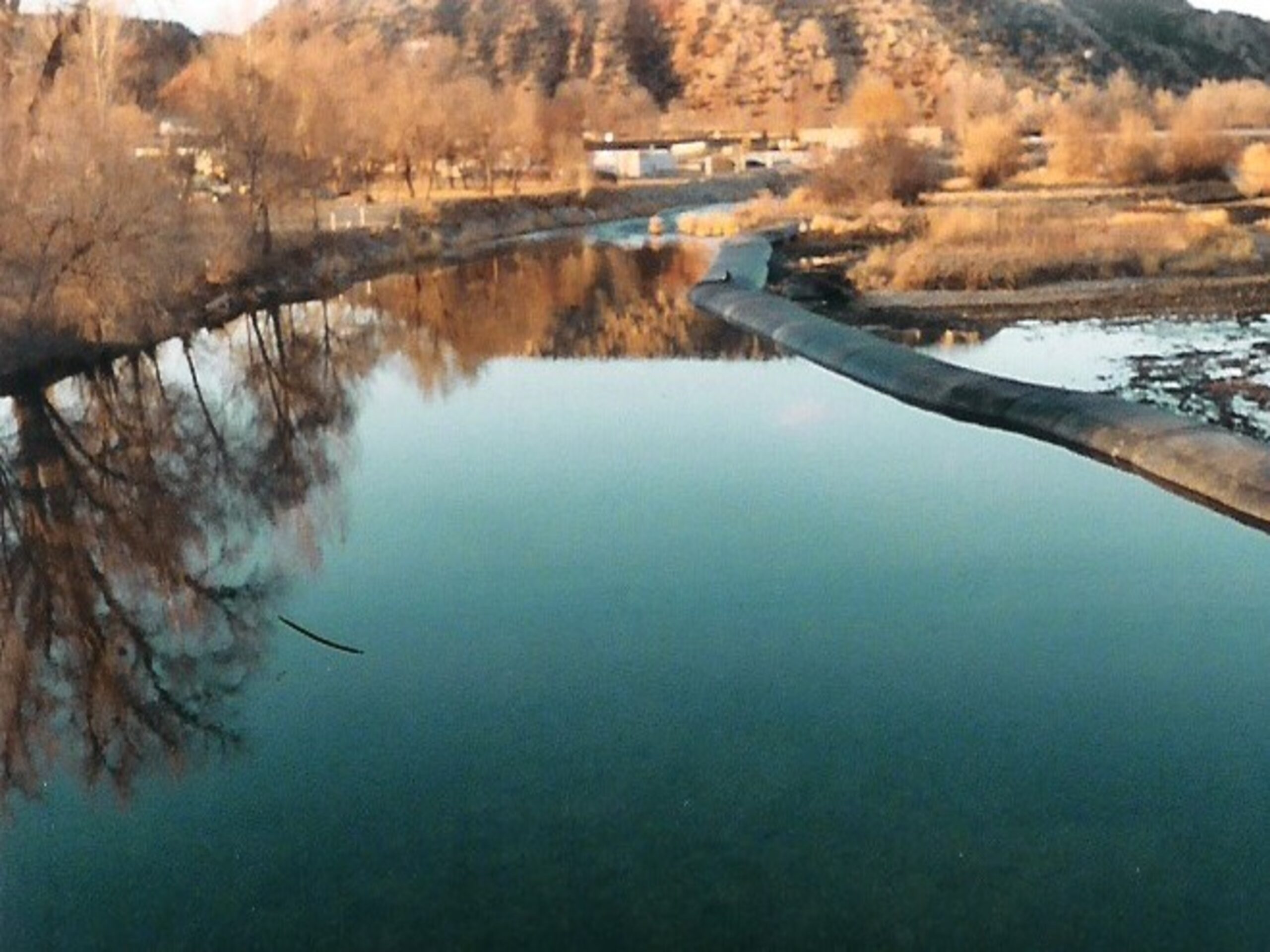
27.) Fantastic job AquaDam!




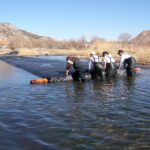

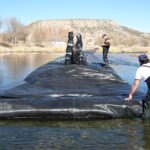
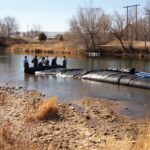
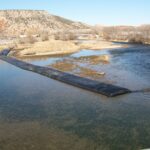
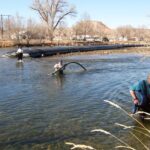


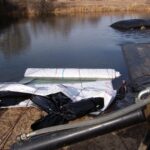

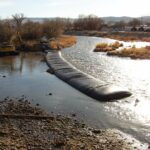

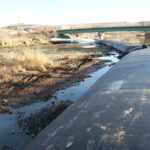
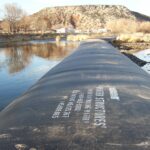



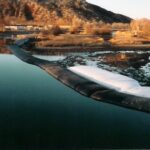

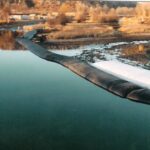



5ft tall AquaDams, Bighorn River, River Diversion, Intake Installation
